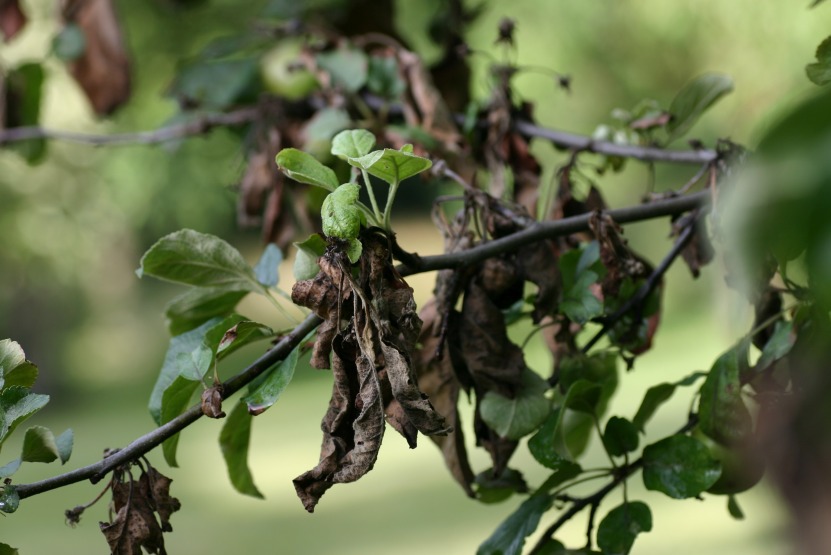This is the big guy, one of few pathogens that can single-handedly kill a tree.
(Photo credit: “Apple tree with fire blight" by Paethon, licensed under CC BY-SA 3.0.)
This is the big guy, one of few pathogens that can single-handedly kill a tree. A plant pathologist would call it Erwinia amylovora. First recognized in New York at the end of the 19th century, fire blight research opened the new field of plant pathology. A microscopic bacteria, it can be moved from tree to tree by bees, birds, squirrels, insects, arborists and their tools; the list goes on.
All apples, pears, Mountain Ash, Cotoneaster, Saskatoon, Aronia, and other pome fruit-bearing members of the rose family are susceptible. Rose family stone fruit plants, cherries, plums, apricots, etc. get similar symptoms, but theirs are caused by another bacterial disease, called Pseudomonas.
The infection
Fire blight usually enters the tree through the flowers, but any other opening will do. Hail damage to the bark, pruning cuts, and insect damage all work. Once inside the tree, the contest between the tree’s defenses and the strength of the bacterial strain begins. If your tree has a strong immune system (let’s call it that for convenience), the blight will never get through the door. The weaker your tree’s immune system, the greater advantage the blight has.
The symptoms
Once infected, the tree will go through a series of different symptoms. First are the wilted flowers and rusty red, fire scorched looking leaves. The dead branch tip may bend around in what is called a shepherd’s crook. As the disease progresses, whole branches will begin to die and the bacteria form a milky ooze that drips from branches and is easily carried to infect your other trees—or your neighbours' trees.
If not dealt with up to this this stage of infection,major sections of the crown will start to die. Only a heavy pruning job might save it.
The cure
Back in the day, antibiotics were sprayed on infected trees and had some good results. Restricted chemical use laws have now made this method difficult and expensive. The only way a tree with a less-than-optimal defense system is going to win is through early detection and complete removal of the affected branches.
That walk-through inspection of your garden becomes the difference between life and death.
(Photo credit: “Apple tree with fire blight" by Paethon, licensed under CC BY-SA 3.0.)









